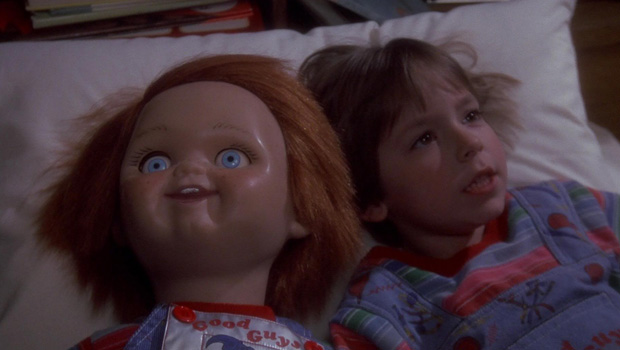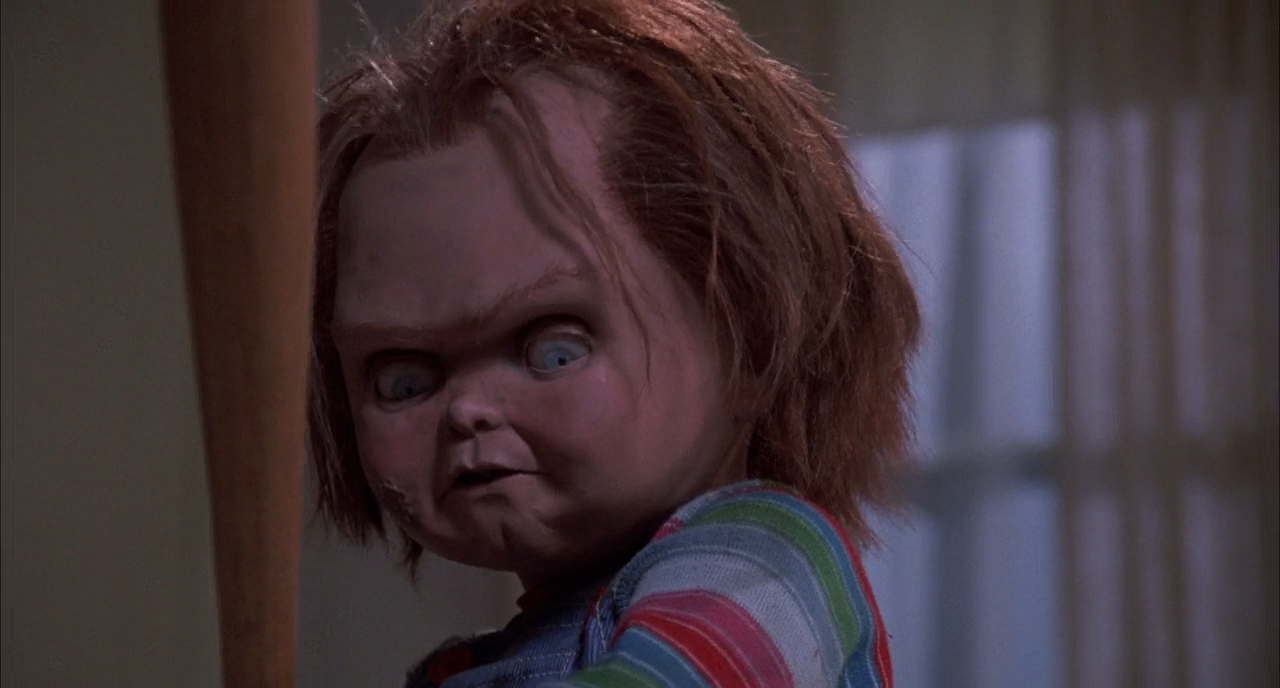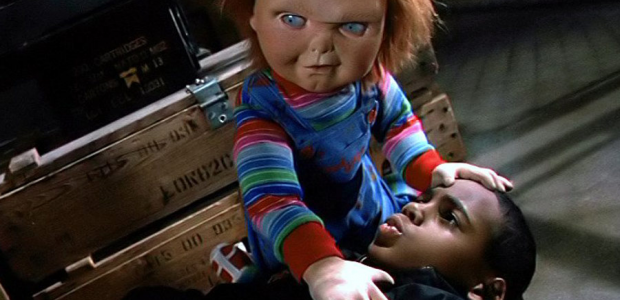From his big-screen debut in 1988 to the recent CHILD’S PLAY reboot, Chucky has become something of a “horror icon.” However seemingly silly the “killer doll” device is, the reality is that these movies wouldn’t have the popularity they do if they didn’t exploit the strong aversion many have towards dolls. CHILD’S PLAY managed to capitalize effectively on the particular unease we feel around inanimate, human-esque objects.
 In his writings on the uncanny, Freud wrote about a patient who recalled staring at her doll as a child, waiting to see if it would blink, sneeze, or give any other indication that it was secretly alive. Psychologist Ernst Jentsch wrote well over a century ago in his essay “On the Psychology of the Uncanny” that dolls arouse, even occasionally in adults, “intellectual uncertainty” about whether or not a doll might come to life, and that the onlooker in question might determine that the doll is merely a doll, only to be plagued by nagging “secondary doubts.”
In his writings on the uncanny, Freud wrote about a patient who recalled staring at her doll as a child, waiting to see if it would blink, sneeze, or give any other indication that it was secretly alive. Psychologist Ernst Jentsch wrote well over a century ago in his essay “On the Psychology of the Uncanny” that dolls arouse, even occasionally in adults, “intellectual uncertainty” about whether or not a doll might come to life, and that the onlooker in question might determine that the doll is merely a doll, only to be plagued by nagging “secondary doubts.”
At the beginning of the first CHILD’S PLAY film, we see Chicago serial killer Charles Lee Ray (Brad Dourif) in a standoff with a police officer. When Lee is mortally wounded, he takes a “Good Guy” brand doll (a sort of parody of the then-popular “Cabbage Patch Kids” franchise) and, after uttering what is ostensibly a fraudulent Voodoo incantation, Lee transfers his soul into the doll.

Next, we meet young Andy (Alex Vincent), as he’s preparing breakfast for his mother Karen (Catherine Hicks). It’s Andy’s birthday, and he’s bummed out that Karen didn’t manage to get his coveted “Good Guy” doll. But then, while Karen is working that day in Chicago’s financial district, she hears that a mangy street peddler is selling one of the dolls at a discounted price. If only the kid had asked for a toy race track…
The doll is brought home, and suddenly people, babysitters begin to mysteriously fall out of windows. Andy is insistent that Chucky, the new doll, is committing the murders, but no one believes him. When he is brought in to the police station and picked at by police psychologists, doubted by everyone around him, you begin to lose hope as the viewer . You find yourself thinking, “Oh my god, there’s no way anyone is going to believe this kid.” With Chucky’s appetite for blood, there seems to be no stopping him. After all, who would suspect the Good Guy doll?
Getting back to Jentsch and notions of secondary doubts, one of the most memorable scenes in the film is the one where Karen discovers that the Chucky doll, for all his actions, doesn’t have batteries inside. She stares at, waiting for it to come to life. Of course it does, but what makes the scene so effective is that the viewer is staring with her, anticipating… dreading the inevitable terror.

Critical response has always been mixed. Siskel and Ebert offered contrasting opinions: Ebert called it an “effective” horror film, while Siskel dismissed it, taking umbrage with the fact that the film relies so heavily on the vulnerability/culpability of the main child character to deliver fears. While reactions to the sequels have varied, the original film is still immensely popular among horror fans. It shows regularly on the El Rey Network (check your cable provider’s website or El Rey’s site for channel info), it’s a popular streaming option, and it’s a major fixture of seasonal horror marathons held in countless art houses throughout October.
It’s a film that holds a special place for me, because I can remember my own personal episode with a killer doll. I went outside one morning to find that my “Howdy Doody” dummy had been buried in the backyard. I can still remember seeing it’s little foot protruding from a mound of loose dirt. It didn’t take much sleuth work to figure out that this was my little sister’s doing. In her defense, she had been losing sleep for fear that the doll would come to life to terrorize the family a la the murderous mannequin in CHILD’S PLAY.
Anyone who dismisses a movie like CHILD’S PLAY on the grounds that the premise is silly is missing the point. The film recognizes, even torments its viewers with, the inherent incredulousness of its own narrative. If we could all swiftly dismiss irrational fears on the grounds that they are irrational, the world would be a very different place. Films for that matter, and horror films especially, would be very different. Imagine how dull they’d be if the only addressed practical concerns, and the killer dolls, zombies, and boogeymen were all substituted with student loan payments, hangnails, and premature balding. The successful killer doll movies are not scary because we believe, rationally, that our dolls will come to life to kill us. They’re scary because of those lingering “secondary doubts,” that only seem to become stronger when we try to diminish their power through pure reason.
-Brandon Engel
- [THE BIG QUESTION] WHAT’S YOUR FAVORITE FEMALE ENSEMBLE IN MOVIES? - July 22, 2016
- [IN THEATERS NOW] THE BOY (2016) - January 24, 2016
- Cult Movie Mania Releases Lucio Fulci Limited Edition VHS Sets - January 5, 2016






No Comments